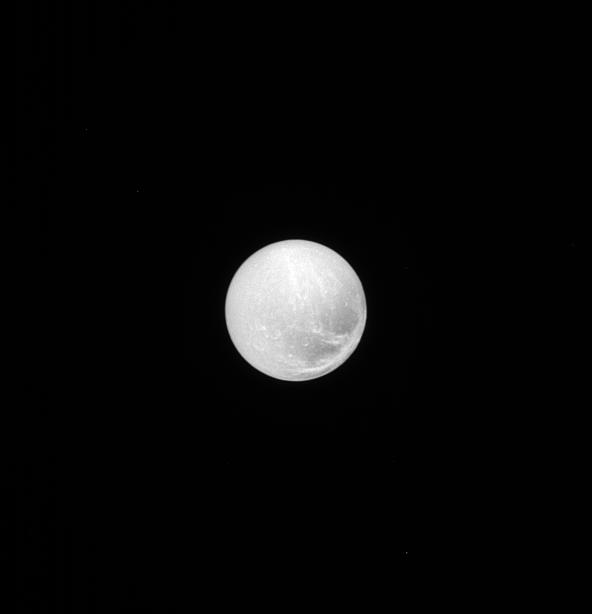Dione, Face On

| PIA Number | PIA17166 |
|---|---|
| Language |
|
When imaged with the Sun nearly at our backs, Dione's heavily scarred surface lacks the shadows that emphasize the surface topography. However, this geometry highlights variations in surface brightness, which provide further evidence of Dione's active and often violent past.
The surface of Dione (698 miles, or 1,123 kilometers across) is covered in craters, reminding us of the impacts that have shaped all of the worlds of our solar system. Dione's surface also bears linear features that suggest geological activity in the past. See At Carthage Linea for more information.
Lit terrain seen here is on the Saturn-facing hemisphere of Dione. North on Dione is up and rotated 33 degrees to the right. The image was taken in visible light with the Cassini spacecraft narrow-angle camera on June 27, 2013.
The view was obtained at a distance of approximately 810,000 miles (1.3 million kilometers) from Dione. Image scale is 5 miles (8 kilometers) per pixel.
The Cassini-Huygens mission is a cooperative project of NASA, the European Space Agency and the Italian Space Agency. The Jet Propulsion Laboratory, a division of the California Institute of Technology in Pasadena, manages the mission for NASA's Science Mission Directorate in Washington. The Cassini orbiter and its two onboard cameras were designed, developed and assembled at JPL. The imaging team is based at the Space Science Institute, Boulder, Colo.
For more information about the Cassini-Huygens mission visit http://saturn.jpl.nasa.gov or http://www.nasa.gov/cassini . The Cassini imaging team homepage is at http://ciclops.org .
Credit: NASA/JPL-Caltech/Space Science Institute
